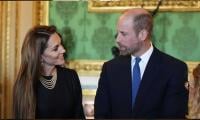Relief package
The few extra days taken by the federal government to announce an eagerly awaited financial relief package have been worth the while. While naturally there will be demands for more in a country where so many are desperate for relief, ranging from giant corporations to labourers who live below the poverty line, the package worth around Rs1.2 trillion appears to be extensive for the most part. In addition to focusing on the lowest income strata of the country, the package also includes reductions in fuel prices and policy rate. This reduction in fuel prices was necessary and already long-overdue because of the declining oil prices in the international markets. Thanks to this unexpected downward trend in oil prices, the government has been able to accumulate benefits worth billions of rupees that will stand in good stead while offering relief to the needy in the country. Now, a reduction of Rs15 a litre is surely a welcome move. Second, a monthly stipend of Rs3,000 for daily wagers is good in principle but certainly not enough relief. As many economists and commentators have been pointing out, the rising inflation has made it not difficult but actually impossible for even a lowest-income family to survive for less than Rs15,000.
Since the ADB, IMF and World Bank all are ready to open their coffers and relax conditions to help any debt repayments at least for the time being, the government should seriously think about raising the amount to no less than Rs10,000. Similarly, it is good that the government has allowed utility bills to be paid in installments, but for some lowest income households a minimum threshold of bills must be waived. Our utility companies have been subsidizing and even waiving major defaulters on electricity and gas; now those subsidies and wavers should be diverted to benefit the poor. The third component of the package promises special incentives worth Rs200 billion to exporters and industrialists. The details of this are yet to be worked out but we have seen in the past that unless some fundamentals are sorted out such incentives fail to produce desirable results. What are these fundamentals? One is a lower policy rate, and that’s where we come to the next measure announced by the State Bank of Pakistan, which has cut the rate by just 150 basis points which is again too little to help our exporters and industrialists, substantially.
We just need to look at the prevalent interest rates around the world; in most countries it is below five percent and in other cases it is between five to ten per cent. There are only 22 countries in the world – half of them the least developed countries in Africa – that have an interest rate more than Pakistan. But still bringing down our interest rate to 11 percent should be welcome. Finally, with the relief package for the poor a high level of transparency is called for. Sadly, there are many in the system who look for corruption opportunities even in the time of crisis. All distribution of aid and help must be transparent and aboveboard. There should be no room for any negligence in this matter. The package is, on the whole, a welcome one. We do not know however what the days ahead hold. Already traders have expressed dissatisfaction over the economic package, stating that the relief is insufficient. Such complaints will continue. The fact though is that a start has been made and we hope it can be built upon if the corona crisis continues for a prolonged period of time.
-
 Chad Michael Murray Admits 2000s Fame Could Have 'destroyed' Him
Chad Michael Murray Admits 2000s Fame Could Have 'destroyed' Him -
 Emma Stone Reflects On Diane Keaton's 'most Valuable' Lesson
Emma Stone Reflects On Diane Keaton's 'most Valuable' Lesson -
 Kanye West Once Paid $1 Million Per Day To Record Album: Here's Why
Kanye West Once Paid $1 Million Per Day To Record Album: Here's Why -
 Prince Harry Hopes To Show Archie, Lilibet Where He 'grew Up'
Prince Harry Hopes To Show Archie, Lilibet Where He 'grew Up' -
 Jacob Elordi Names Childhood Crushes Including A Major 60s Star
Jacob Elordi Names Childhood Crushes Including A Major 60s Star -
 Kristin Davis Dicusses Fate Of Her Sex And The City Character
Kristin Davis Dicusses Fate Of Her Sex And The City Character -
 Zara Larsson Steps Up Criticism Against 'evil' Policies
Zara Larsson Steps Up Criticism Against 'evil' Policies -
 Adam Sandler Jokes About Aging As He Accepts Career Honour
Adam Sandler Jokes About Aging As He Accepts Career Honour -
 Royal Stalker Cases Increase Following Harry, Meghan's Marriage: Report
Royal Stalker Cases Increase Following Harry, Meghan's Marriage: Report -
 Sarah Ferguson Eyes Princess Diana’s Private Letters In Bid To Secure Future
Sarah Ferguson Eyes Princess Diana’s Private Letters In Bid To Secure Future -
 Andrew Plots Secret Sales Of Royal Jewels Amid Royal Lodge Eviction
Andrew Plots Secret Sales Of Royal Jewels Amid Royal Lodge Eviction -
 Abbott Elementary Star Chris Perfetti Hints At What To Expect From Season 5
Abbott Elementary Star Chris Perfetti Hints At What To Expect From Season 5 -
 Prince William Always Ready To Step Up: ‘He’s Barely Able To Contain His Fury When Kate’s Involved’
Prince William Always Ready To Step Up: ‘He’s Barely Able To Contain His Fury When Kate’s Involved’ -
 Florida Woman ‘tricked Innocent Movers Into Helping Her’ $7k Burglary: Report
Florida Woman ‘tricked Innocent Movers Into Helping Her’ $7k Burglary: Report -
 Harry Deserves Top Protection As King Charles’ Son, Prince William’s Brother
Harry Deserves Top Protection As King Charles’ Son, Prince William’s Brother -
 Meghan Markle Receives Key Advice As Experts Warn She’s Doing Too Much
Meghan Markle Receives Key Advice As Experts Warn She’s Doing Too Much



